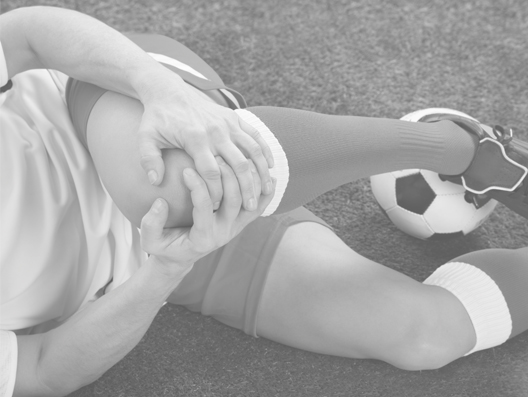
If you have just injured yourself badly, either through a fall, a sport or just twisting an ankle while walking, you will know! You will have experienced an immediate onset of pain, possibly with swelling in the area, and difficulty weight-bearing or moving. Most often, these injuries are not serious and involve soft tissue, such as ligaments, tendons, and muscle. Knowing what to do, especially in the first few days after an injury, can really make a difference to your long-term recovery and of course to your immediate pain levels.
The initial stage after injury is called the “Acute Inflammatory Response” and is characterised by pain, redness, swelling and loss of function. The quality and efficiency with which you manage this stage after injury has been proven to be an important determiner of your short and long-term recovery.
The PRICE guidelines describe what you should do especially in the first 24-48 hours after suffering a sprain, strain, or contusion (bruising). PRICE stands for protection, rest, ice, compression and elevation.
PROTECTION
In the first 3 days after injury (or longer if the injury is severe), you need to protect the injured area from further injury. It may help to use a sling or splint or even to use crutches to off-load the area and prevent further irritation.
REST
Resting your injured body part is crucial. Pushing through pain is not advisable and may cause the injury to worsen. Avoid activities that aggravate it or cause increased swelling. It is important to still carry on with normal daily activities as much as possible, remembering to take frequent rests. When you are resting, you should try and move the area gently to keep it from getting stiff.
ICE
Since inflammation is at its peak in the first 3 days, ice is particularly important in cooling the area and reducing the inflammation and swelling. You are advised to use a cold pack- a bag of chipped ice works well- with a damp barrier between the pack and your injured body part. It should be applied it for 20-30 minutes. This can be repeated every 2 hours.
COMPRESSION
Applying compression with a bandage or tubigrip is helpful in reducing the swelling, and the pain levels, as well. Be sure to watch out for any constrictions in the tubigrip and remove it if the pain or swelling increases or you experience any numbness. It is recommended to remove the compression at night, and to also remove it anytime you are applying ice.
ELEVATION
Elevating the injured body part, preferably above the heart, is important especially during the first 3 days whenever you are sitting or lying down. This helps to reduce the swelling and keep it from “pooling” in the foot or hand for example.
Of course using the PRICE regime above is only the beginning of your recovery process. Many common injuries, like ankle sprains, are under-treated and not managed properly from the beginning and have been linked to many long-term problems. It is crucial that you speak to a physiotherapist and get the correct advice and treatment to set you on the road for a full recovery.
If your symptoms worsen or you are unable to weight-bear, then we suggest you see a doctor to rule out a bony injury such as a fracture.
If you have any questions, please get in touch with PhysiOptima! We are experts in getting you better so that you stay better!

